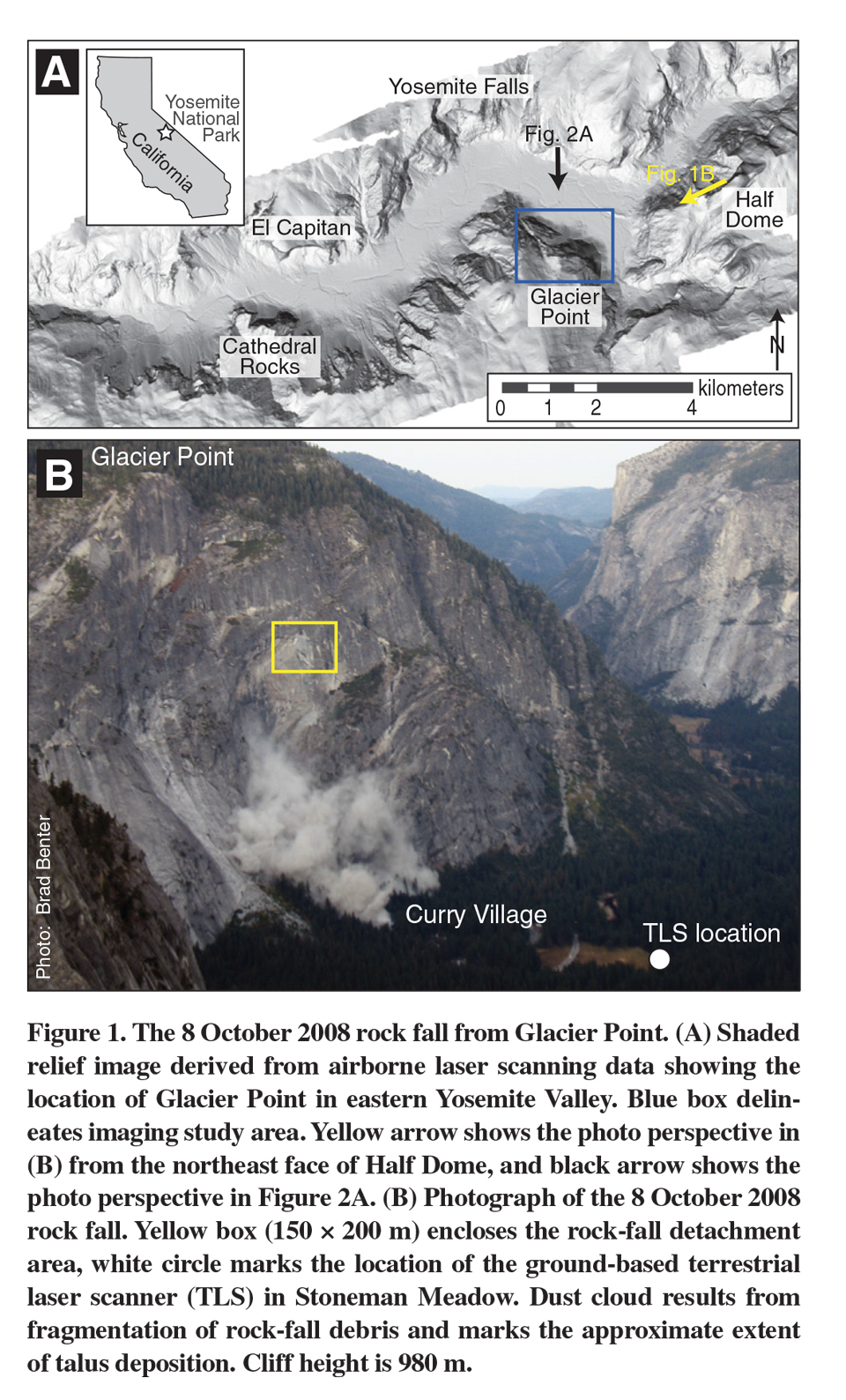
Hours after the morning rockfall in Yosemite National Park on October 8, dust from crushed, broken rock and dirt was still visible in the Valley air.
This photo is looking towards Curry Village.
Credit: Yosemite Traveler/Sierra Sun TImes file photo.
October 9, 2018 - Monday, October 8th, marked the 10-year anniversary of the most damaging rockfall in Yosemite’s recent history. Following a smaller rockfall the previous day, at 6:55 am on October 8th, 2008, a rock slab totaling 4,530 cubic meters (13,480 tons) fell from Glacier Point, impacting the Ledge Trail and sending thousands of boulders tumbling down the talus slope into Curry Village.Twenty-five structures, including both canvas tents and wooden cabins, were damaged or destroyed. Fortunately, most of these cabins were empty, as the Yosemite Institute students who had been sleeping in them overnight were eating breakfast in the Curry Pavilion when the rockfall occurred. Although there were only three minor injuries, it was a chaotic and very nearly tragic event.
The October 8th, 2008, rockfall was also notable in that it occurred as the Park Geologist was midway up El Capitan, allowing him to join a select group of people who have been “rescued” from El Capitan uninjured! 
Source: G. Stock, NPS









